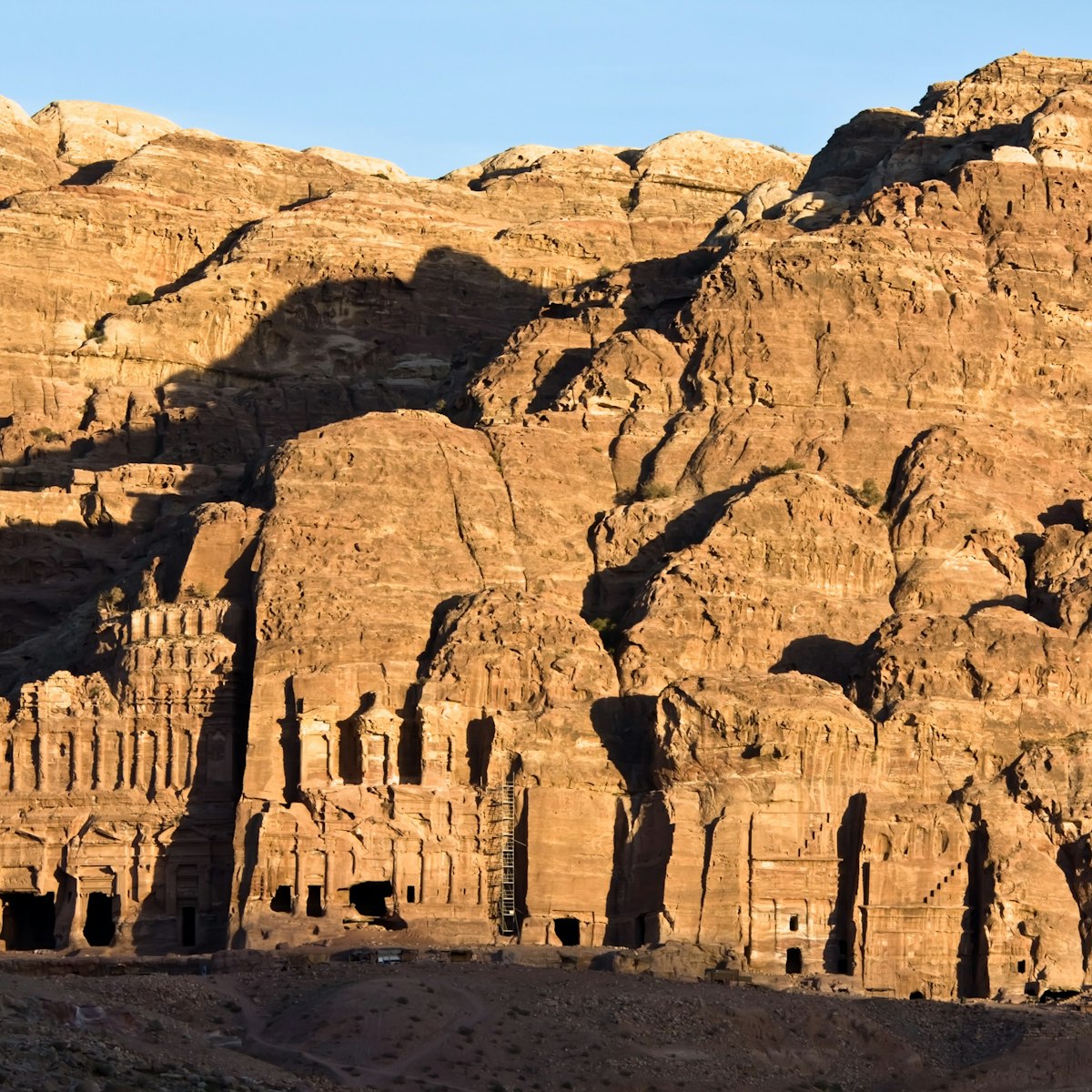Pressed up against the cliffs on the opposite side of the highway to Wadi Rum is the seldom-visited Bedouin district of Humaiyma. Curious visitors who notice the brown sign off the main Aqaba Hwy and struggle along the badly potholed access road are rewarded with a surprisingly large archaeological site.
The largely Nabataean site includes 27km of covered aqueducts, some of which are visible today; they are evidence of the Nabataean attitude towards water that it could be brought in channels from the mountains or held in reservoirs on the plains. King Aretas III built Humaiyma around 80 BCE as a trading post designed, according to archaeologists, to help settle nomadic tribes. His efforts, judging by the nomads camping nearby some 2000 years later, were not wholly successful. Trajan's army built a fort here in AD 106, and settlement continued into the Byzantine and early Islamic periods. In AD 750 the site was eventually abandoned.
There is a small visitors centre, but it was unmanned at the time of writing, and there was no legible information at the site.







